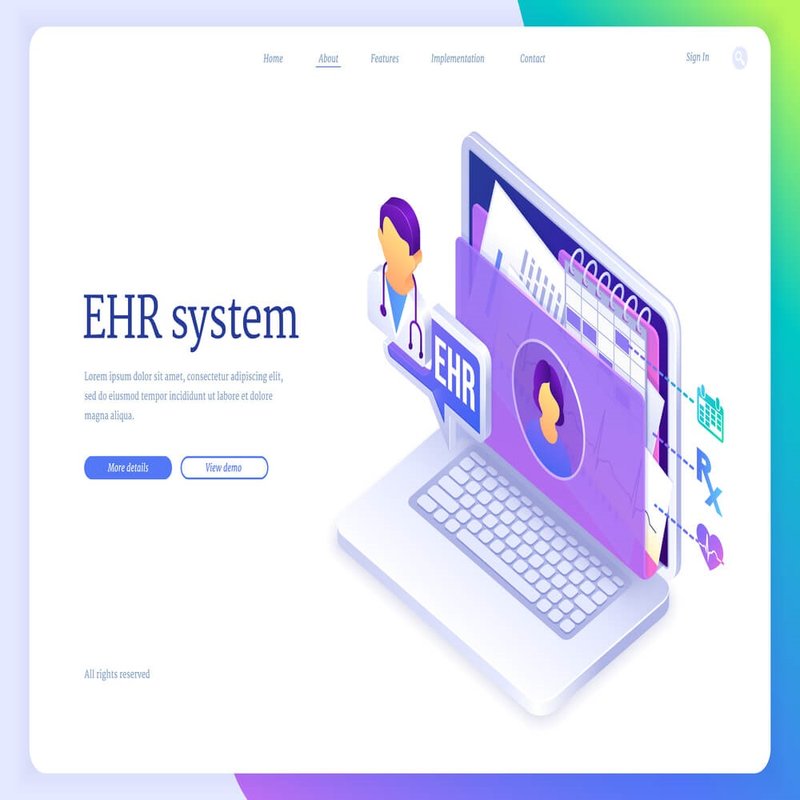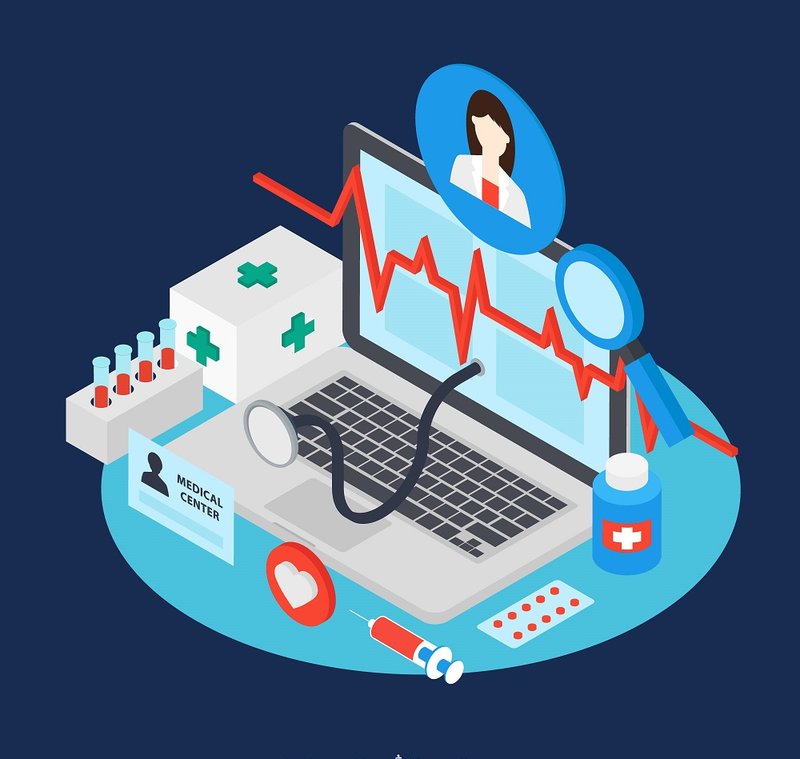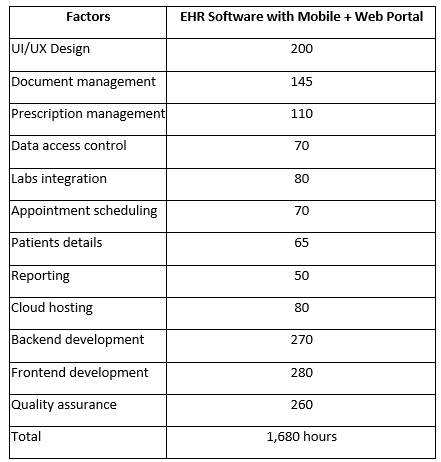Develop an EHR System: Costs, Features, and Best Practices
If you consider how healthcare has developed, these studies appear to be evidence that electronic health record systems are come to change the healthcare industry. According to a report, the worldwide electronic health records (EHR) market will be worth 52.98 billion.
The effects of technological advancements in the healthcare industry, including telemedicine, CRMs, and EHR software development, are extensive. The software benefits everyone, including patients, doctors, and business owners.
As you continue reading this blog article, you'll examine the system's advantages as well as some operational details including the different system types, their functions, construction methods, and key features.

An EHR system is what?
The main topic of our post today is the development of an electronic health records system (HER). An electronic health record is a fully digitalized piece of software that contains complete health-related data of the patient. It might consist of:
- Medical background
- Vaccination information
- Test outcomes
- Vital statistics
- Allergies
- Medications
- Lab results
- Notes on progress
- Details about insurance, etc.
When we discuss what an electronic health record system is, another term that is frequently used is "electronic medical record". Electronic medical records are considerably different from electronic health records.
A patient's chart that has been computerized is called an electronic medical record. It contains the patient’s medical and treatment histories. Although labs and other healthcare professionals are supposed to have access to electronic health records, this is only permitted within the clinic.
Various EHR system types
How to construct an electronic health record system in the healthcare industry must consider two different types of systems.
- The information is kept on an in-house physical server. Hardware and software must also be purchased and maintained by the doctors.
- The server is situated outside of the medical facility. They are not in charge of maintaining and managing patient data. The advantage of this type is that medical professionals just concentrate on information gathering and not on the working of the IT system.

The advantages of an EHR system for key stakeholders

Let's examine the benefits an electronic health record provides for businesses, hospitals, and patients as now you are familiar with the concept.
Benefits of EHR software development for enterprises
One size does not fit all when it comes to the EHR sector. Different EHR software requirements apply to healthcare organizations of different sizes and locations. This implies that there is always room for fresh business model innovation.
EHRs have a variety of monetization options available, including pay-per-use, subscriptions, free software with limited paid features, etc. The creation of EHR systems is incredibly profitable due to the variety of monetization options.
Hospitals profit from the development of EHR systems.
No matter the EHR system type you select, it has the ability or advantage to reduce the paperwork superbly like bills and reports. Within seconds, the system may be searched to find the data for any patient. With the level of digitalization that EHR promises, it will also be simple for doctors to maintain patients' medical histories, prescribe medications, and obtain data from the lab.
Software for electronic health records contains comprehensive patient data, including data analytics-driven medical insights that alert healthcare professionals to erroneous dosages, negative side effects, and the potential impact of drug interactions. This has the effect of reducing the likelihood of malpractice and health problems.
Each carefully thought-out EHR system design includes a variety of security safeguards, including session termination automation, digital signatures, encryption, and multi-factor authentication. With such thorough security procedures in place, there is absolutely no danger of software being compromised.
EHR development and deployment might be highly expensive in the short run. However, over time, hospitals will benefit from the investment due to lower transcribing costs, affordable patient record storage, and simpler claims handling.
The interactions and experiences a patient have with their doctors and the healthcare institution are significantly improved by EHR software. The administrative process for scheduling doctor appointments, hospitalization formalities, etc. is first made simpler and faster. Second, patients can view their medical information, follow the progress of the clinician's notes, and communicate with their doctors online.
Patients gain from the advancement of EHR software.
A user-friendly patient platform is included with each type of electronic health record system, giving patients access to their information, test results, and other paperwork they may need to submit insurance claims or schedule additional doctor visits.
Patients frequently wind up taking the same test several times in a healthcare system where access to the patient’s medical records is restricted. This need is avoided when appropriate electronic health record software is implemented because the doctor already has all the test information and results stored in their system.
After examining the system's advantages and operation, it is time to talk about how to further develop it.
How is an EHR system built?
The stages of development that software developers should follow when creating an electronic health record system are as follows.

- Idea validation
The software company will investigate the viability of a custom solution before beginning to develop one. They will connect or set 2-3 meetings with you to learn about your goals and needs, and they will research your competition to determine what features would make you stand out from the crowd.
- Prototype of an EHR
After confirming the concept and getting a favorable market and technical evaluation report, we at Decodermind defined the team that would work on it, a list of features, and a technological stack, and then move on to creating a prototype.
A prototype is made that closely resembles how we intend for the software to appear and function.
- Development, Creation, and Testing
Once we receive approval for the prototype, we start the final design process. We build user journeys using designs that will be seen in the finished product.
We build the EHR system with all the necessary functionality, incorporate security components, and add advanced technologies like artificial intelligence. At Decodermind, we make it a point to work on the development process using a milestone approach, where the phases are divided into numerous Agile sprints. This ensures a quicker delivery and real-time quality check of each module.
To ensure that the application is secure against hacking, we test it across numerous networks and platforms.
- Launching and Updating
The EHR software can be launched either as an addition to the current system or as completely new software. The launch procedure is ensured to be flawless by the deployment professionals.
We keep the application up to date with a focus on ongoing support and error-free operation.
Considerations for developing EHR software
Because it has so many components, developing an electronic health record system can become challenging. We can examine some of those factors.
- Preparing the certifications and compliance for the EHR
A variety of compliances must be built into an electronic health record in addition to certifications like ONC-ATCB and Euro Rec. The absence of these rules may incur expensive fines and expose the EHR system to security breaches.
- Work on the EHR's mobile version
The software's mobile version facilitates communication between patients and medical professionals. With the aid of the mobile EHR, patients are more actively involved in their therapeutic process.
- Data movement
When switching from one system to another, it's crucial to migrating all the crucial data into the new software. To ensure perfect seamlessness, it is crucial to adhere to a milestone method where data is transferred in stages.
- Monitor the effectiveness of the EHR system
Monitoring its effectiveness is crucial to the system's ongoing success. Decodermind evaluates a system's usability.
- Physicians' ease of use of the EHR
- Calculations of ROI
- Care quality determined by patient feedback
- Maintaining an eye on the EHR's quality
Let's look at the Features of the EHR software that is essential.
Must Add Features for EHR Custom Software:

- Document management:
One of the objectives of the creation of EHR applications is to create a manageable documentation tool. When uploading their documents, patients and doctors should be able to choose from a variety of formats with ease.
- Patient information:
The patient's personal information in the EHR system includes their full name, address, diagnosis, results of any tests, a list of their prescribed medications, and other important details.
- Prescription administration:
Doctors can remotely prescribe medications to patients while also accessing their medical records to check for drug interactions using the e-prescribing capability. Patients are able to document the history of their medications.
- Data access management:
Multiple data access control mechanisms are required in the system. No two users should have equal access to the same information; for instance, nurses and doctors shouldn't have the same level of access to the same information.
- Making reservations:
With the use of electronic health record software, patients may make appointments with their doctors. On a dashboard, doctors can view the appointments and the patient's information.
- Reporting:
When addressing the question of how to create an electronic health record, reporting is crucial. It aids in providing a thorough review of the patient's demographic information, treatments given so far, the success rate of those treatments, etc.
- Integration of labs:
A test lab's connection with an electronic health record promises to speed up data transmission and decision-making. The fact that the test findings are transferred straight to the apps, where patients and doctors can easily access them, makes everything more efficient.
- Billing:
Each healthcare facility has a system in place for handling bills, claims, Refunds, and payments for services. Nowadays, many systems provide payment options that let patients pay for services directly.
Cost Estimation: for developing EHR software
The cost of building electronic health record software is influenced by a number of factors such as features, tech resource availability, the country of a development agency, and the number of platforms. Some characteristics are constant from one project to the next.
We can break down the cost of the software development for you based on the technology stack, features, and team size we looked at previously.

The approximate price range for the development of custom ERH software with (a mobile and web) platform is $67,200 to $84,000.
Estimated Cost calculation formula: Hours * Per hour cost
- If per hourly charge is $40 then the cost of complete software will be $ 67,200
- If per hourly charge is $50 then the cost of complete software will be $ 84,000
What support can provide for your EHR project?

Decodermind's programmers are skilled at creating effective systems that adhere to all rules. We have a solid understanding of how to develop EHR software that is future-proof using the appropriate technology, which has helped us establish a solid reputation in the healthcare software industry.
We offer the technical expertise and skill set necessary to assist you in designing and implementing an effective healthcare system. You must get in touch with our group of medical professionals to begin using the electronic health record.

 Hamid Salman
Hamid Salman